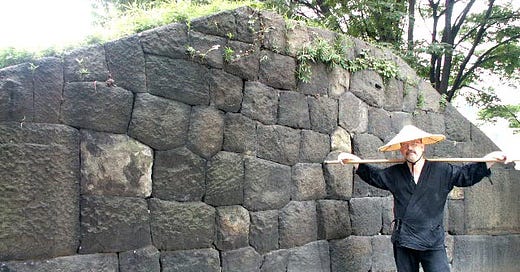Ep. 069: Thoughts along the Pilgrim's Path
What goes through a man's mind as he walks over 300 miles?
Walking gives one plenty of chances to cogitate. So, on my 300-plus-mile saunter down the Old Tokaido Highway from Tokyo to Kyoto in the Autumn of 2001, I had plenty of opportunity to just think. When time permitted, I wrote down some of my more cogent thoughts at the end of the day--some 35 times, as it happened. Let's take a look at a few of the more palatable results of all this brain-work in this episode of--
TEMPLE TALES!




